The Brilliance of Budburst
Under March skies and the new Sap Moon, change is a foot. Sap is rising in the trees heralding the arrival of new leaves and blossom, a real sign of spring.
One of my favourite seasonal words applies to this time of year, budburst. It’s very onomatopoeic, suggesting an explosion of energy and excitement - so perfect for spring.
But what does it mean?
Budburst is the process of tree buds emerging from winter dormancy.
Buds begin to swell in spring, the bud scales burst open then fall away revealing the new leaf or flower. It heralds the start of green returning to our gardens and outdoor spaces.
There’s a generally misunderstanding that trees wake up in spring but actually they are never really sleeping. Tree buds develop at the end of the growing season, in late summer and autumn before the leaves fall. The trees then stay dormant through winter but still respond to environmental changes like the amount of light, day length, water levels and temperature.
As we leave the cold, dark days of winter behind, light and temperature increase, triggering activity in the trees.
Hormones contained in each bud start to promote division of cells and hence growth. Early blossom bursts forth…
… as does new spring foliage, ready to catch sunlight to turn into sugars to feed the tree.
Yes that’s photosynthesis folks- remember learning that at school?
A new season begins.
Timing of Budburst
The first new leaves start to unfurl between March and April in the UK but each year the timing of budburst differs. As you might expect weather, climate and light pollution pay a huge part, leading to variable budburst dates.
Monitoring and predicting annual budburst is a branch of phenology.
Westonbirt Arboretum recorded the earliest budburst in November 2021 and the latest in May 2013,
Budburst also varies by species of tree. Trees less able to withstand cold temperatures keep their foliage in protective buds and delay putting energy into leaves that could be ruined by a late spring frost. These trees have a later budburst.
Elder, hazel and hawthorn seem to have the earliest budburst here in Hampshire. The new bright green elder leaves have been bringing joy to my early spring walks for a few weeks now. This week I spotted hazel and hawthorn leaves too.
One of the latest trees to break bud is beech. The pointy beech buds are still tightly wrapped at the moment, growing alongside last year’s dead brown leaves. This feature of beech, of holding onto dead foliage through the winter until spring bud burst, is known a marcescence. It is one of the reasons beech hedging is so popular for screening in gardens – despite being deciduous it gives almost year round cover.
Then there’s cherry plum blossom and blackthorn whose buds burst into blossom before the leaves really open.
My favourite budburst occurs on Horse Chestnut (Aesculus).
Our popular conker trees have tight buds through winter, then in March they grow to huge, shiny buds that look like they’ve been varnished. These irresistibly sticky buds are arranged like candlesticks on the tree. They remind me of childhood walks when we used to look out for ‘sticky buds’.
Spring Activities to Try
Sign up for my FREE monthly newsletter crammed full of seasonal activities, gardening tips, nature inspired activities and creativity - click here .
Engage with the season you are in by attending one of my nature inspired workshops. Each one is a celebration of the time of year with lots of nature and plant tips and a healthy dose of seasonal creativity. You can see my latest workshops here
Watch the budburst on a field maple tree in this lovely film from the Woodland Trust.
If you want to get involved with recording budburst near you, head over to The Woodland Trust’s Nature’s Calendar and enter your findings here. This help scientists monitor the effects of climate change on wildlife.

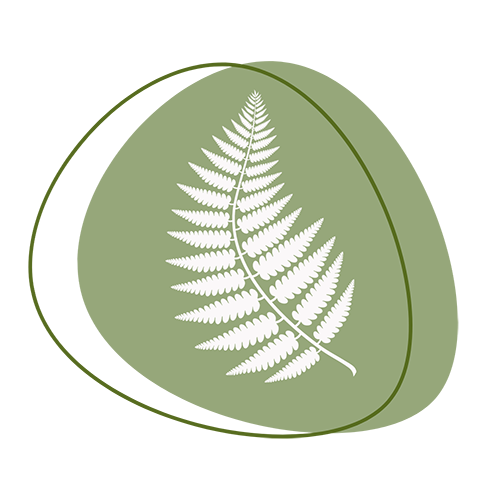
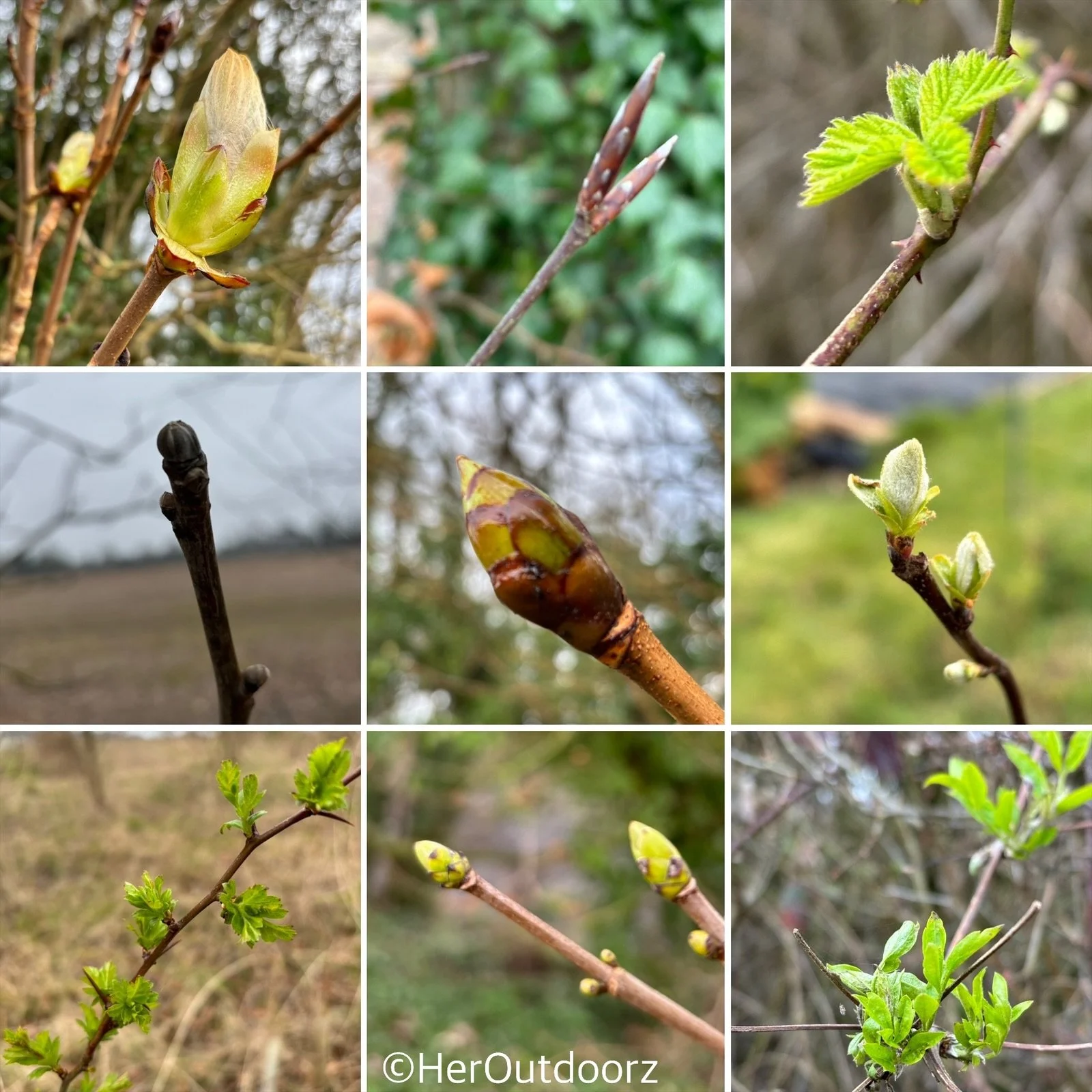
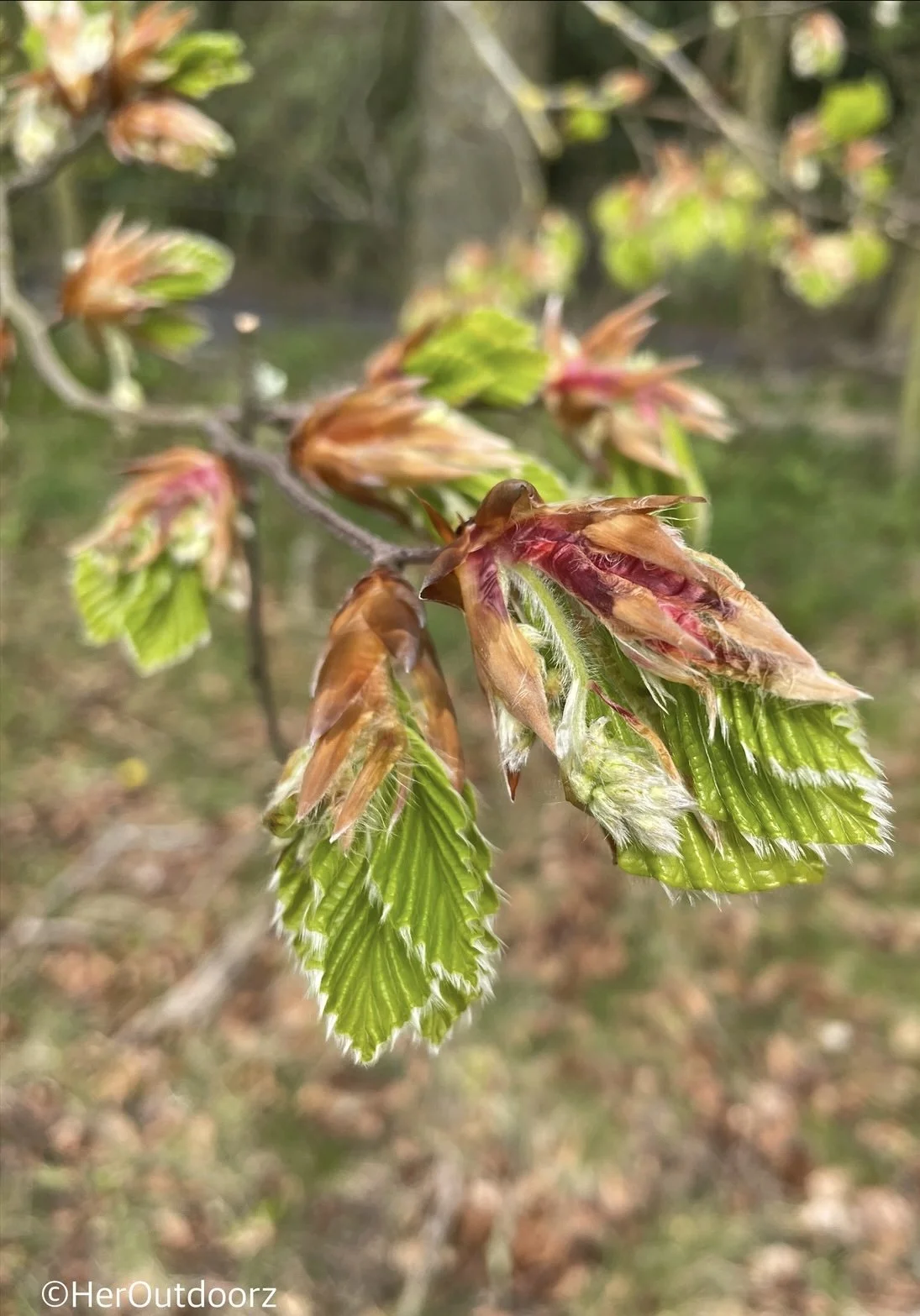
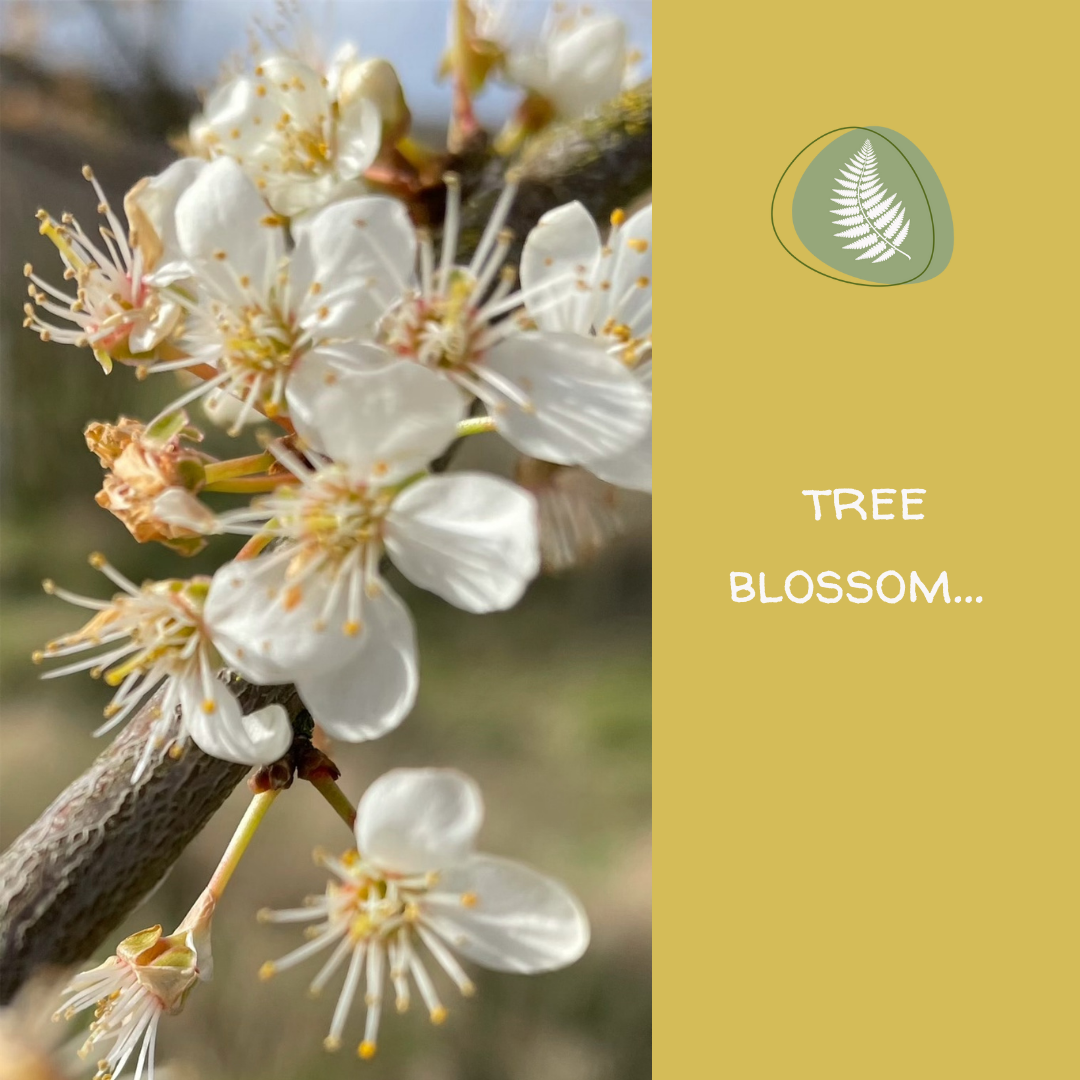




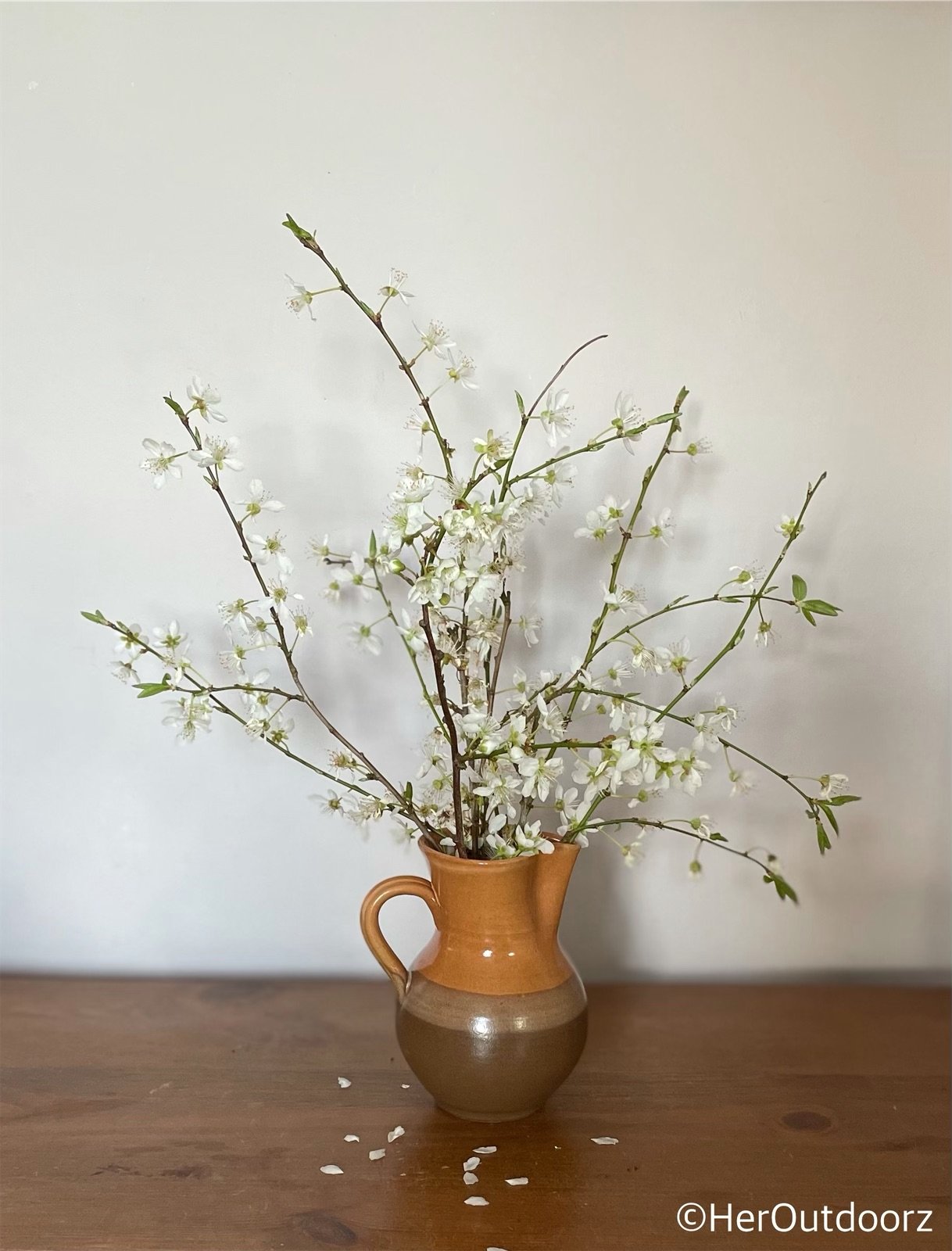



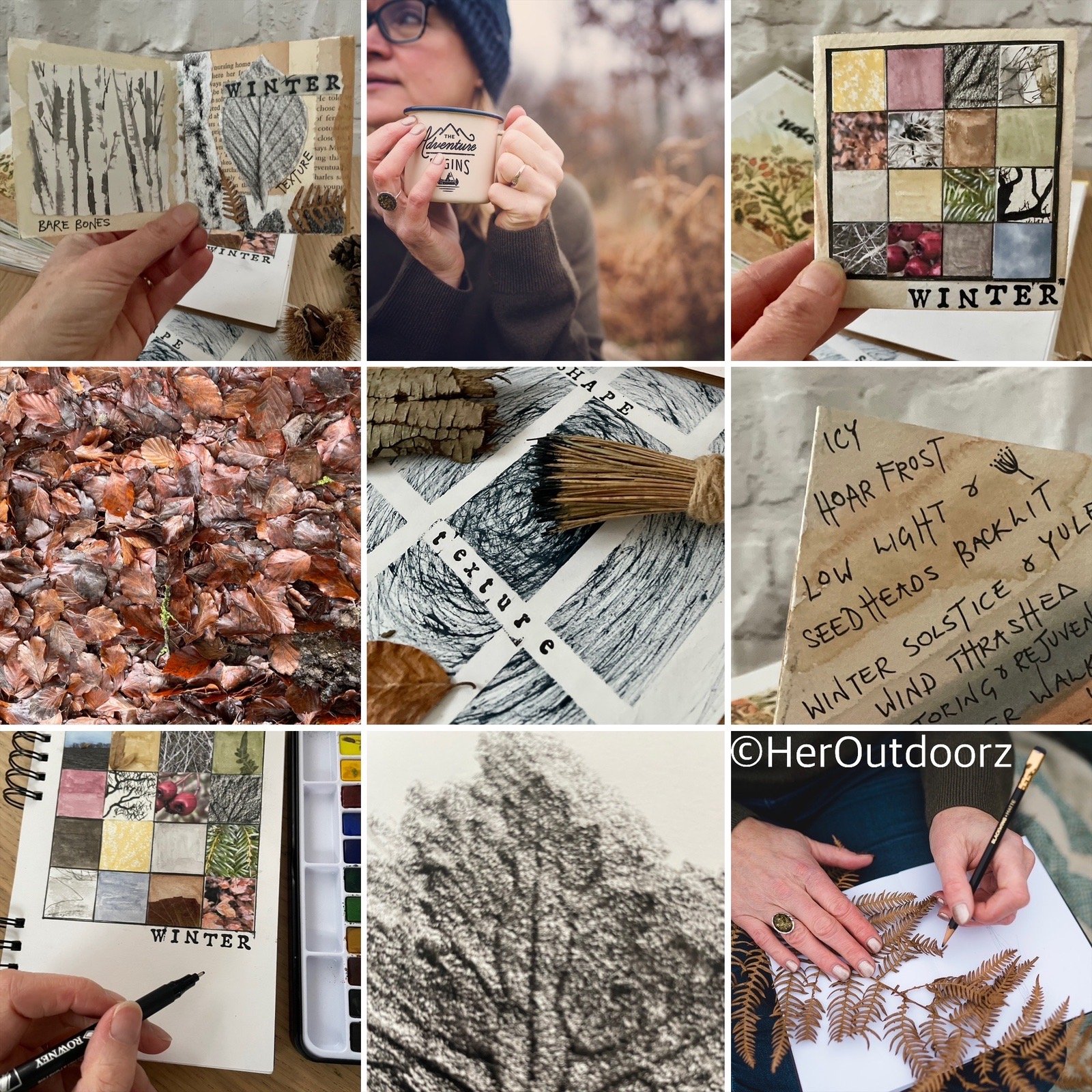





It’s the Spring or Vernal Equinox on 20 March and one of the most reviving sights at this time of year is the white blossom which starts to appear in our hedgerows. It is a real heralder of spring.